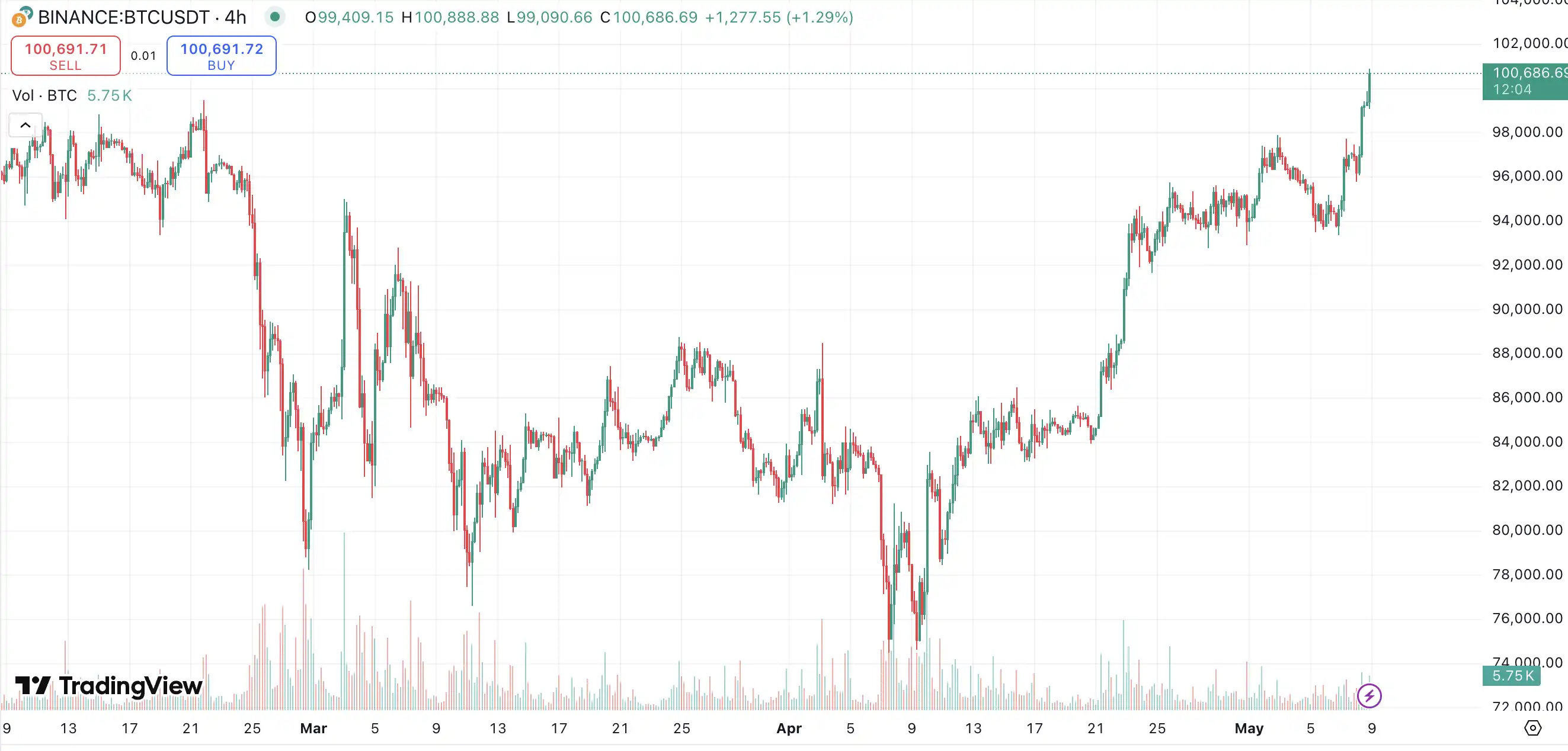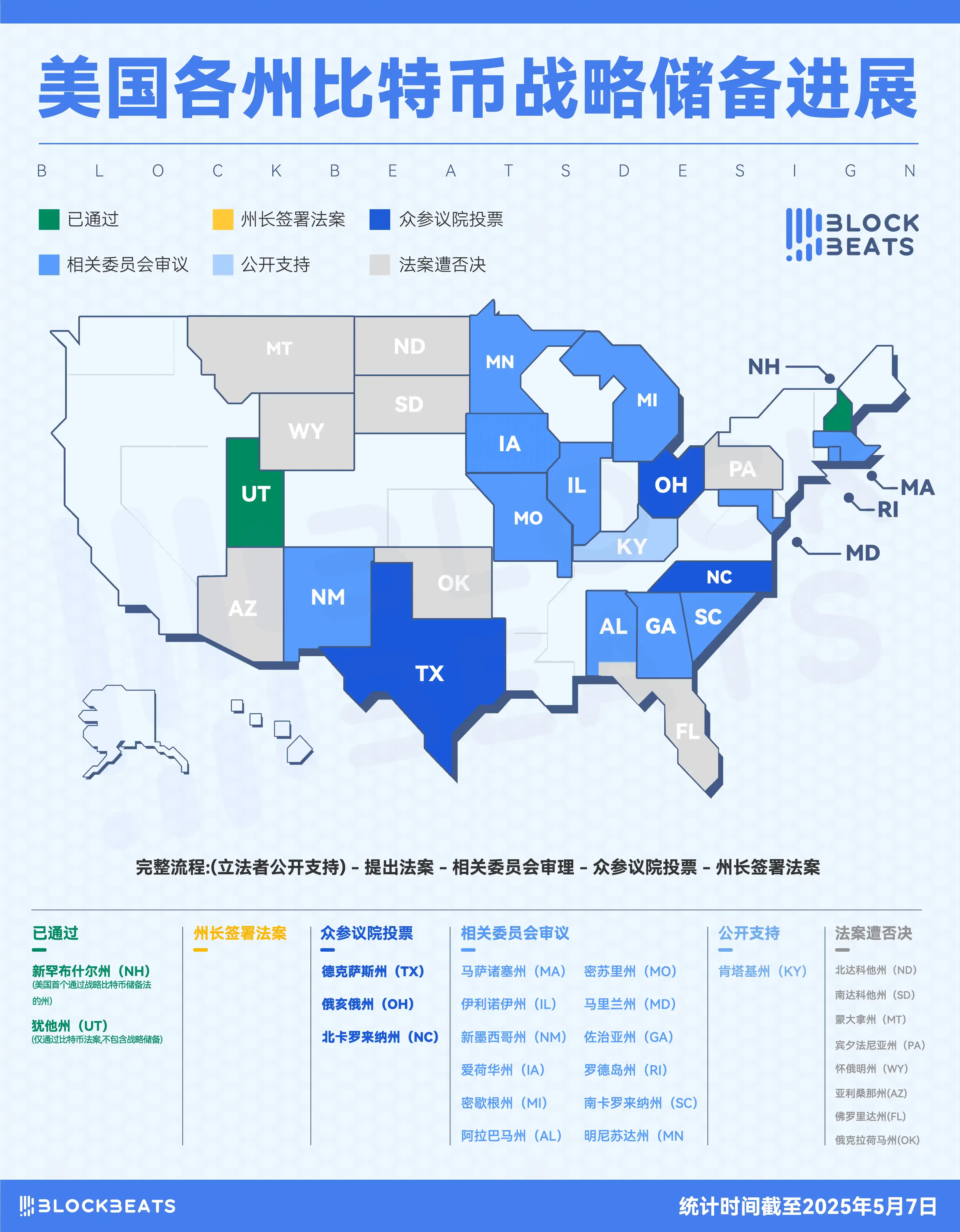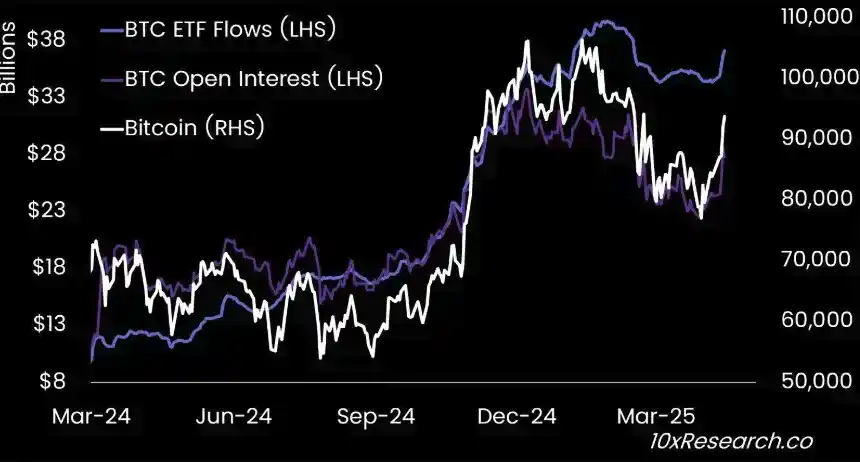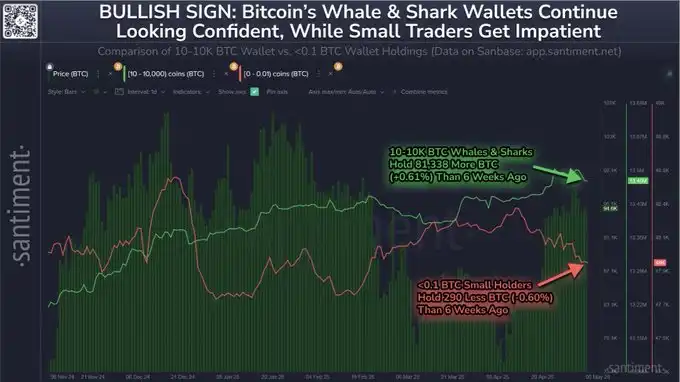Since Bitcoin briefly broke through $10,200 on February 4, it has experienced a tug-of-war for three months, with the price failing to effectively stabilize above the $100,000 mark. Just now, the market finally witnessed a critical breakthrough, with Bitcoin surpassing $10,100, marking a 4% increase in 24 hours.

In the first half of 2025, the crypto market has gone through several ups and downs, with Bitcoin's market share climbing to a historic high. The Trump administration has released favorable regulatory news while simultaneously disrupting tariff orders, raising suspicions of market manipulation.
At the beginning of the year, strong U.S. employment data and persistent inflation pressures led to market expectations that the Federal Reserve would delay interest rate cuts. Higher interest rates reduced investors' interest in high-risk assets, resulting in capital outflows. In February, Bybit suffered a hacker attack, losing $1.5 billion in assets, becoming one of the largest cryptocurrency thefts in history, which raised concerns about the security of cryptocurrencies and further depressed Bitcoin prices.
In early April, Trump announced a new round of tariffs on nearly all imported goods, triggering panic in global markets. The stock market plummeted, and investors' risk appetite declined, affecting the cryptocurrency market. Bitcoin, as a risk asset, was not spared and saw a significant price drop.
However, with recent tariff negotiations, ETF fund inflows, continuous purchases by listed companies, and various states promoting strategic reserve legislation, Bitcoin is experiencing a new round of structural increases. The market is showing a trend of shifting from retail investors to institutions and from risk speculation to asset allocation.
Bitcoin Reserve Plans by Listed Companies and U.S. States
Bitcoin has welcomed a sustained "big buyer."
MicroStrategy has been a steadfast buyer of Bitcoin, announcing on May 2 that it plans to launch an ambitious "42/42 plan," aiming to raise $84 billion over two years to purchase Bitcoin. Previously, it had implemented a $42 billion "21/21 plan."
Additionally, Japanese listed company Metaplanet recently announced it would invest another $53.4 million to acquire 555 BTC. It also issued $25 million in ordinary bonds to fund additional Bitcoin purchases.
Indian listed company Jetking's CEO Harsh Bharwani stated that they are raising billions of dollars to purchase 18,000 BTC.
The Jetking CEO said, "In the next six months, we plan to raise funds and scale up to about 180 Bitcoins. In the following year, we will reach a scale of about 1,800 Bitcoins. Ultimately, around 2030, using various tools and resources at our disposal, we will reach a scale of about 18,000 Bitcoins."
In addition to the ongoing purchases by MicroStrategy and other listed companies, various U.S. states are also advancing Bitcoin strategic reserve legislation. At the federal level, Trump signed an executive order in March requiring the establishment of a strategic Bitcoin reserve and digital asset inventory.
On May 7, crypto journalist Eleanor Terrett revealed that New Hampshire became the first state in the U.S. to pass a strategic Bitcoin reserve law, authorizing state treasurers to purchase the world's largest digital asset directly or through exchange-traded products (ETPs).
Early yesterday morning, Texas's strategic Bitcoin reserve bill (SB 21) passed the DOGE committee review without amendments and will enter the final voting stage. As the Texas legislature is set to adjourn on June 2, the final outcome of the bill is expected to be revealed in the next three weeks. This bill is an important legislative measure for Texas to establish a strategic Bitcoin reserve and has completed all committee review procedures, just one step away from final approval.

Expectations of Interest Rate Cuts and Improved Trade Environment
In the early hours of May 8, the Federal Reserve resisted pressure from Trump and announced that it would maintain the benchmark interest rate between 4.25% and 4.5%. This marks the third consecutive meeting without a rate cut. Despite the evident economic contraction in the U.S. in the first quarter and inflation pressures caused by Trump's tariffs, the Federal Reserve stated that the economy is "growing steadily" and the job market is "strong," emphasizing that the current inflation level is "slightly high but controllable," and has not yet signaled a rate cut.
However, Powell stated, "Despite increasing uncertainty, the overall economy remains robust." He noted that the unemployment rate is still low, and the labor market has "reached or is close to full employment." The market expects that by the end of 2025, the Federal Reserve will lower the federal funds rate to 3.6%.
Arthur Hayes, co-founder of BitMEX, stated at the recent Token2049 conference that investors should be grateful to U.S. monetary authorities. He believes inflation may continue, and the market generally views this as favorable for assets like Bitcoin. In an interview, he also pointed out, "I think the current market environment is very conducive to the rise of risk assets, just as we saw from the third quarter of 2022 to early 2025."
Analysis shows that the current market presents a complex game: on one hand, the high-interest-rate environment continues to suppress investors' interest in high-risk assets like cryptocurrencies; on the other hand, geopolitical risks combined with inflation expectations are driving some funds to use Bitcoin as "digital gold" for hedging.
Notably, the Federal Reserve's policy statement mentioned for the first time that it "will consider a wide range of economic data rather than a single indicator," which the market interprets as a potential shift to easing when signs of economic slowdown become clear. Currently, CME interest rate futures show that the probability of a rate cut in September has risen to 68%, up 12 percentage points from before the decision. The correlation between the crypto market and traditional financial markets continues to strengthen, with macro policy changes becoming a key variable influencing digital asset prices.
In addition to the Federal Reserve's expectations of rate cuts, the market has also welcomed a certain positive factor: initial successes in tariff negotiations. On May 8, the UK and the U.S. reached an agreement on tariff trade agreement terms, with the UK government agreeing to make concessions on imports of U.S. food and agricultural products in exchange for the U.S. lowering tariffs on UK car exports.
According to CNBC, U.S. Treasury Secretary Basant stated in an interview on Monday that he expects progress in U.S.-China trade negotiations in the coming weeks and pointed out that Trump's 145% tariffs on China cannot be maintained long-term. This indicates that the Trump administration has some room for easing in tariff policy, which is beneficial for the stable development of the crypto market.
Continuous Net Inflows into Bitcoin ETFs
At the end of April, analysis firm Matrixport stated that from the daily chart starting March 19, Bitcoin ETF funds have been continuously flowing out, and the open interest in the futures market has also decreased. From January to April, the cumulative net outflow from ETFs approached $5 billion.
However, recent observations have noted a large-scale inflow of nearly $3 billion, with open interest in futures contracts also increasing, while funding rates remain at low levels. This indicates that the current new capital inflow mainly comes from genuine long-term holding demand, making the overall bullish signals more positive compared to the ETF buying driven by arbitrage funds at the beginning of the year.

On May 4, according to Farside data, the total net inflow into Bitcoin ETFs once again surpassed $40 billion, reaching $40.207 billion, approaching historical highs. The highest point of total net inflow into Bitcoin ETFs occurred on February 7, reaching $40.78 billion.
At the same time, data indicates that during the period when Bitcoin has been consolidating below $100,000, small-scale retail investors have begun to sell BTC. Crypto analyst Santiment recently analyzed the behavioral differences between Bitcoin whales and retail investors, often indicating that Bitcoin may be moving towards the next upward trend.
Data shows that wallet addresses highly correlated with the overall health of the crypto market (holding 10 to 10,000 BTC) have accumulated 81,338 Bitcoins during the past six weeks of volatility, accounting for 0.61% of their total holdings.
Meanwhile, small wallets (holding less than 0.1 BTC) that typically show a lagging inverse relationship with price trends have sold 290 Bitcoins in the past six weeks, reducing their holdings by about 0.60%.

免责声明:本文章仅代表作者个人观点,不代表本平台的立场和观点。本文章仅供信息分享,不构成对任何人的任何投资建议。用户与作者之间的任何争议,与本平台无关。如网页中刊载的文章或图片涉及侵权,请提供相关的权利证明和身份证明发送邮件到support@aicoin.com,本平台相关工作人员将会进行核查。




